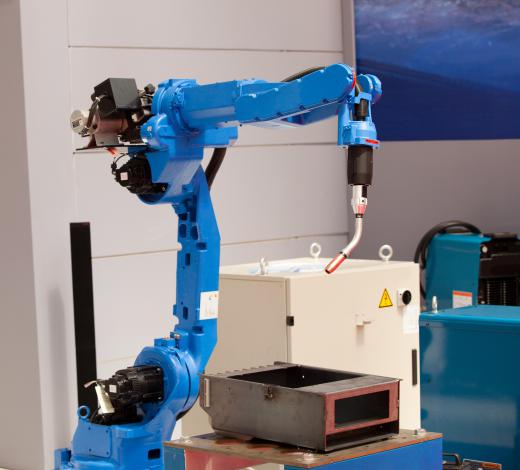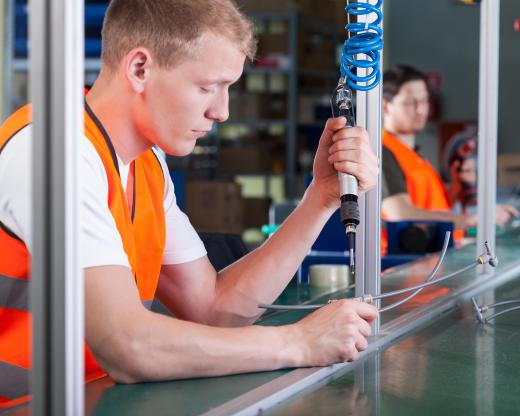Assembly workstations vary widely based on the product's internal and external construction, including printed circuit board (PCB) manufacturing, mechanical construction, and outside housing production. Workstations can either be automated with robotics or designed as a manual worker area for delicate items. Employees take part in all types of assembly workstations, regardless of the amount of automation implemented.
Printed circuit boards (PCBs) fill the majority of current production items, from stovetop ovens to cell phones. Constructing a PCB requires a number of different assembly workstations oriented in step order for the best production rate. At one workstation, the bare PCB surface is created with specialized screens and solder paste, while at the next workstation the individual electronic components are placed on the board. Reflow ovens are used to fuse the components to the circuitry within the PCB. One or more assembly workstations will focus on testing the final PCBs for a quality assurance step.

Mechanical construction, such as placing a gear on a rod, is normally performed using a number of different assembly workstations. Common workstations in mechanical assembly lines include lathes and drills, as well as welding and riveting machines and areas. The volatile action of each mechanical workstation requires the areas to be enclosed or spaced far from other work zones to prevent injuries to workers and nearby observers.

Many modern exterior housings are formed with plastic extrusion processes. Extrusion machine workstations are operated by trained employees to ensure that the correct shape and quantity of plastic are extruded from the device. This workstation may also include a rack area to cool the plastic housings before they move to the next production step.
Most automated production lines still need employee supervision for successful product creation. Workers will observe and adjust portions of the robotic automation at their individual assembly workstations; each manufacturing step needs to occur according to strict regulations before the product can proceed to the next workstation. Any product defects that occur must be pinpointed and attributed to a particular workstation. Supervisors can troubleshoot and solve the issue at the specific workstation to prevent further flaws.
Manual workstations, such as one that might be used to create a doll by hand, are not as common as automated workstations since costs would remain high for that particular production line. These assembly workstations are normally filled with small hand tools, and other instruments, for the employee to use during production. Although they are slower to produce, handmade items tend to sell for premium prices, based on their overall retail value.
